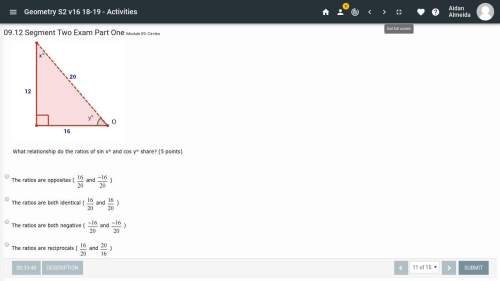
Mathematics, 08.12.2020 22:10 chim84
The domain of the following relation: R: {(−4, 8), (8, 10), (5, 4), (1, 6), (5, −9)} is (1 point) {8, 10, 4, 6, −9} {−4, 1, 5, 8} {−4, 8, 5, 1, 5} No domain exists

Answers: 1


Other questions on the subject: Mathematics

Mathematics, 21.06.2019 18:50, umarhaley
The avenues in a particular city run north to south and are numbered consecutively with 1st avenue at the western border of the city. the streets in the city run east to west and are numbered consecutively with 1st street at the southern border of the city. for a festival, the city is not allowing cars to park in a rectangular region bordered by 5th avenue to the west. 9th avenue to the east, 4th street to the south, and 6th street to the north. if x is the avenue number and yis the street number, which of the following systems describes the region in which cars are not allowed to park? 5th ave 9th ave
Answers: 1


Mathematics, 21.06.2019 19:00, adrianwoods1507
1c) the number 131 is a term in the sequence defined by the explicit rule f(n)=5n-4. which term in the sequence is 131? 2a) write the first four terms of the function f(n)=n^2-1 2b) what is the 10th term of the sequence defined by the explicit rule f(n)=n^2-1 2c) the number 224 is a term in the sequence defined by the explicit rule f(n)=n^2-1. which term in the sequence is 224?
Answers: 2

You know the right answer?
The domain of the following relation: R: {(−4, 8), (8, 10), (5, 4), (1, 6), (5, −9)} is (1 point) {8...
Questions in other subjects:

Mathematics, 15.12.2020 21:30

Computers and Technology, 15.12.2020 21:30



Spanish, 15.12.2020 21:30


Mathematics, 15.12.2020 21:30

Mathematics, 15.12.2020 21:30


English, 15.12.2020 21:30




